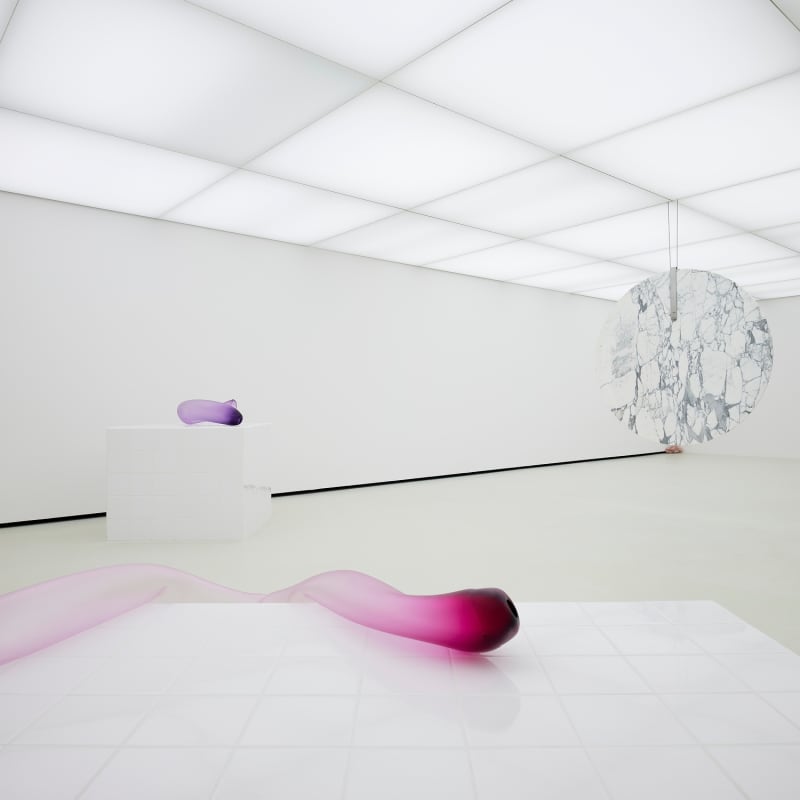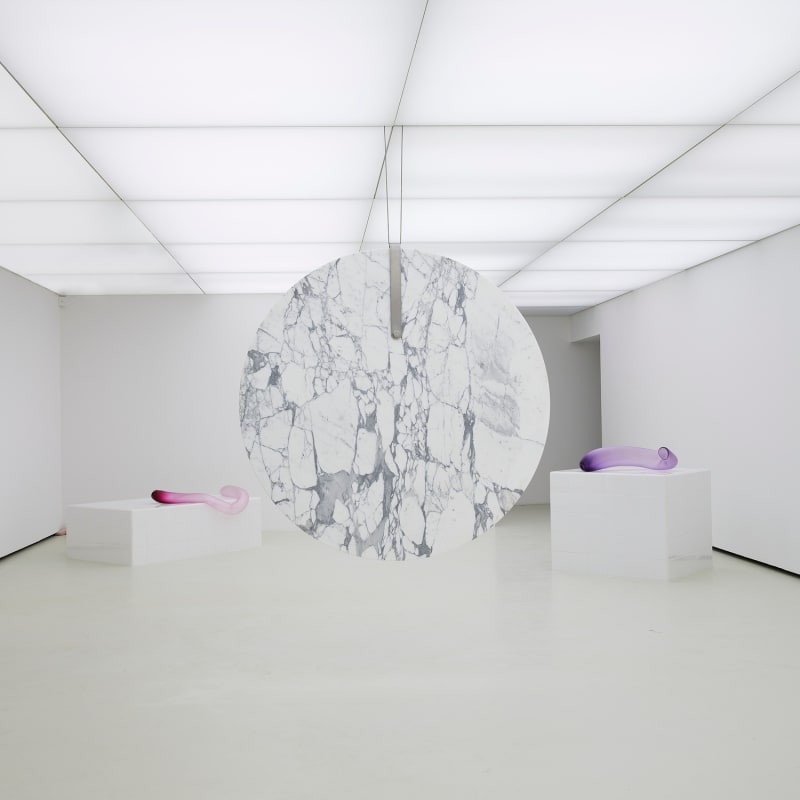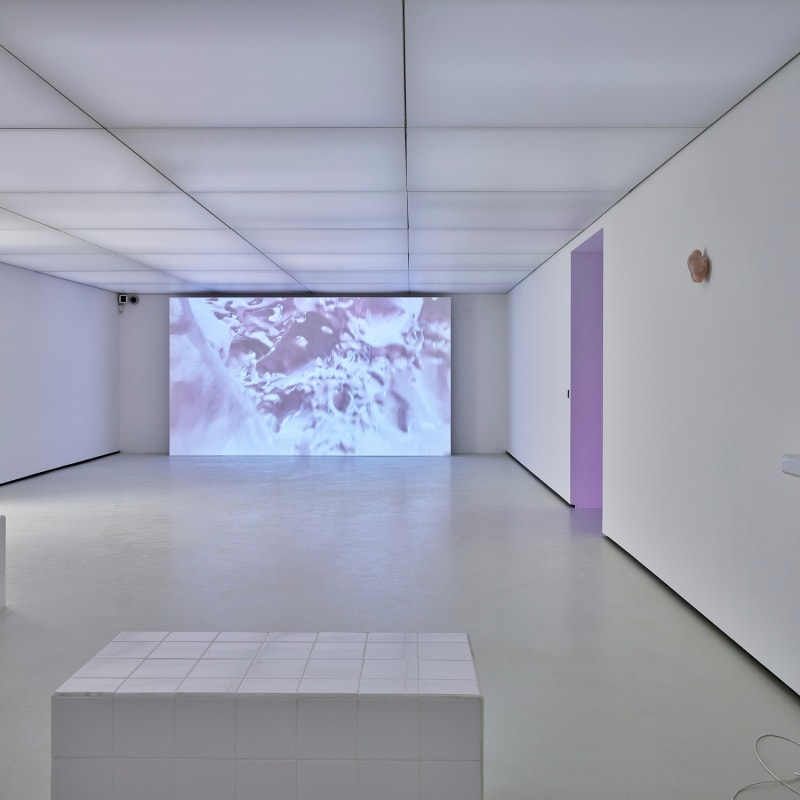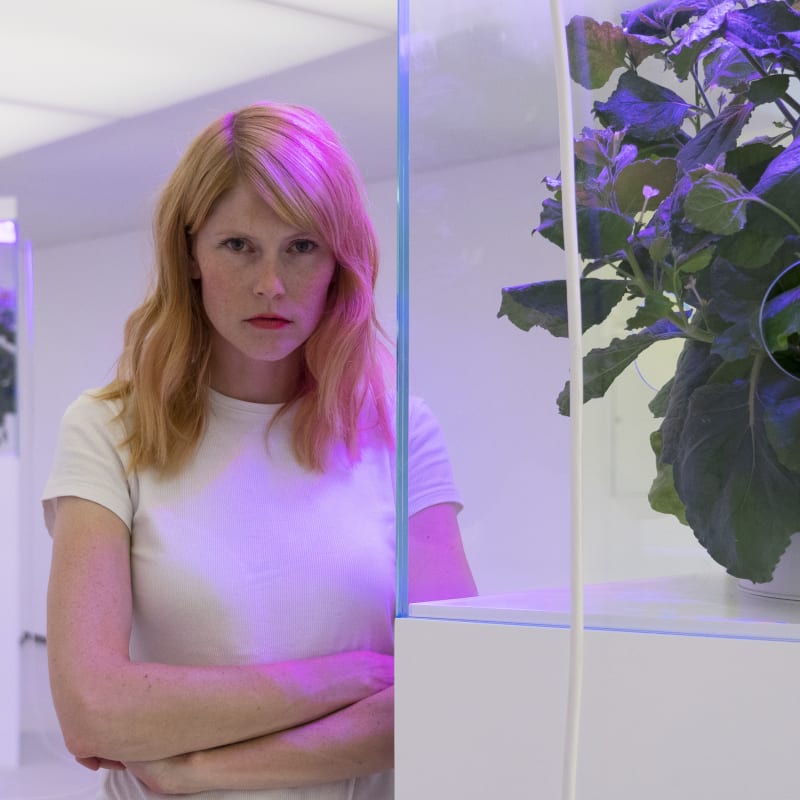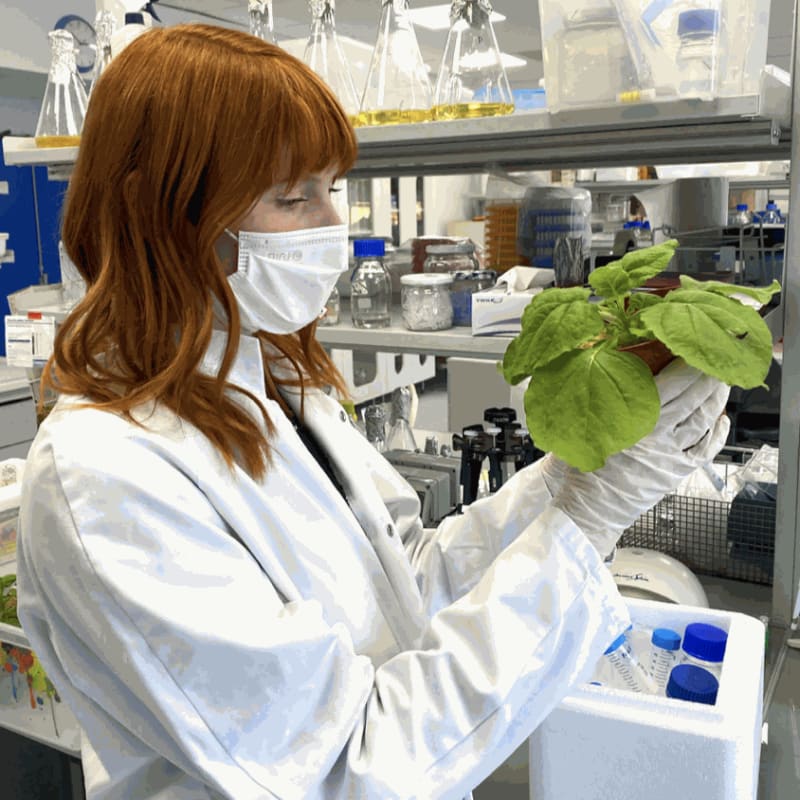Après Théo Mercier, Stéphanie Brossard et Quentin Lefranc, Dana-Fiona Armour investit les salles du programme Rendez-vous, Sous-sol, dédiées à la recherche plastique et aux pratiques émergentes.
Née en 1988 à Willich en Allemagne, l’artiste opère depuis un monde dans lequel les formes s’invitent en véritables agents mutagènes, se transforment les unes les autres et modifient l’organisation des espaces qu’elles occupent, provoquant chez nous un sentiment d’inquiétante étrangeté.
À travers la pureté d’objets dont l’exigence formelle rappelle le vocabulaire de l’art minimal dont elle détourne le souvenir, s’invite une dimension clinique héritée de l’imagerie d’une littérature ou d’un cinéma d’anticipation. Derrière la radicalité de sculptures constituées de silicone, de marbre ou de verre, apparaissent sourdement des formes organiques, réelles ou symboliques, qui questionnent nos relations à un monde hybride dans lequel l’artificiel se mêle au naturel, l’humain au non humain. Au-delà la science y intervient comme un élément majeur — perturbateur ? — dans la construction de nos rapports au monde et de leur représentation. Autoritaire et fragile, elle est ce lieu de tension où les frontières évoluent avec une instabilité préoccupante entre éthique et progrès, entre l’ouverture de nouveaux espaces émancipateurs et l’accomplissement de dangereuses mutations aux conséquences irréversibles.
Le corps est là qui apparaît en miroir comme l’objet central de nos préoccupations. Déconstruit, démembré, évoqué, transformé, infiltré, réduit à sa peau ou ses organes, il s’invite comme par effraction tel le territoire d’expérimentation sensible d’un savant opérant depuis la base reculée de son laboratoire enfoui sous le sol, que la lumière zénithale brutalise.
Le Projet MC1R a été pensé à l’occasion d’une résidence de l’artiste au sein de la société Cellectis qui se présente comme « une société de biotechnologie de stade clinique, qui utilise sa technologie pionnière d’édition de génome TALEN® pour développer des thérapies innovantes pour le traitement de maladies graves ». La collaboration a donné lieu à la conception d’une plante hybride, à la fois humaine et végétale, une Nicotiana Benthamiana (espèce très sensible aux virus utilisés fréquemment dans la recherche, notamment pour le vaccin contre la Covid 19) désormais porteuse du gène MC1R, un gène de nature humaine impliqué dans la carnation, la couleur de peau, le développement des tâches de rousseurs et des cheveux roux, soit autant de caractéristiques permettant de décrire l’apparence physique de l’artiste.
Dans les salles du sous-sol de la Collection Lambert, la présence de cet organisme d’un nouveau type dans une série inédite d’installations, de sculptures et de vidéos offre la promesse d’un voyage inouï au-delà des frontières de l’humain et du végétal, là où la rencontre des deux éléments appelle de nouveaux récits, de nouvelles manières d’envisager un environnement sensible devenu hétérogène — irrémédiablement.
En 2022, l’artiste participera aussi à trois expositions majeures avec la Galerie Setareh à Düsseldorf, avec Nicolas Bourriaud (Radicants) lors de la Biennale de Venise et à Stockholm avec Andréhn-Schiptjenko.
Commissaire de l’exposition : Stéphane Ibars
After Theo Mercier, Stéphanie Brossard, and Quentin Lefranc, Dana-Fiona Armour is taking over the spaces of the RENDEZ-VOUS, Inside the Basement, dedicated to artistic research and emerging practices.
Born in 1988 in Willich, Germany, Dana-Fiona Armour operates in a world in which forms invent themselves in veritable mutagenic agents, transforming each other, and modifying the organisation of the spaces that they occupy, provoking in us a feeling of unsettled strangeness.
The purity of objects whose formal exigence – recalling the vocabulary of minimal art, somewhat distorted by the artist – brings a clinical dimension inherited from the imagery of literary or cinematic social science-fiction. Behind the radicality of sculptures made of silicone, marble, or glass, organic forms – real or symbolic – appear silently, questioning our relationships with a hybrid world in which artifice mixes with the natural, the human with the non-human. Beyond, science intervenes as a major ¬– disruptive? – element in the construction of our relationships with the world and their representations. Authoritative and fragile, it is the site of tension where boundaries between ethics and progress, between the opening of new emancipatory spaces and the accomplishment of dangerous mutations with irreversible consequences, evolve with worrying instability.
The body is present, mirrored as the central object of our preoccupations. Deconstructed, dismembered, evoked, transformed, infiltered, reduced to skin and organs, it forcibly invites itself, like daylight entering the sensitive experimentation zone of a scientist operating from a remote underground laboratory.
Project MC1R was conceived during the artist’s residence at Cellectis, a company that describes itself as “a clinical-stage biopharmaceutical company using pioneering genome editing technology TALEN to develop innovative therapies for the treatment of serious illnesses”. The collaboration led to the conception of a hybrid plant, both human and vegetal, a Nicotina Benthamiana (species that is highly sensitive to viruses frequently used in research, notably for the Covid 19 vaccine) now carrying the MC1R gene, a human gene responsible for the complexion, for pale skin, freckles, and red hair – characteristics which also allow us to describe the physical appearance of the artist.
In the basement galleries of the Collection Lambert, the presence of this new type of organism within an unprecedented series of installations, sculptures, and videos promises an unprecedented voyage beyond the limits of the human and the vegetal, where the meeting of the two elements calls for new narratives, new ways of envisioning an environment that has become, irreversibly, heterogenous.
Dana-Fiona Armour’s work will be shown in three major exhibitions in 2022 – in Setareh gallery of Dusseldorf, at the Venice Biennale (Radicants) with Nicolas Bourriaud, and in Stockholm at Andréhn-Schiptjenko.
Curator : Stéphane Ibars


